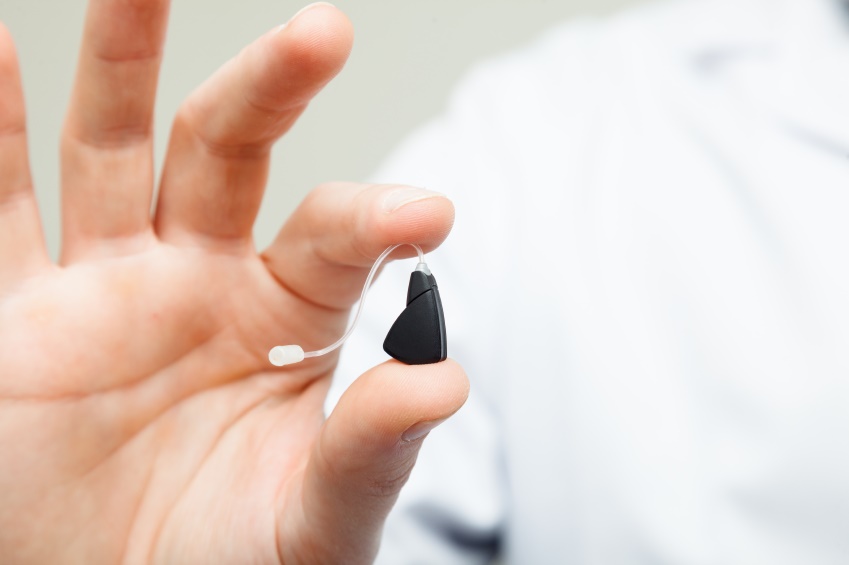
Hearing aid guides are not uncommon, but most are not exactly reader-friendly, either. Most are simply too lengthy or complex, generating more perplexity rather than less.
My guess is that you’re much less interested in the physiology of hearing or in the particulars of acoustical engineering and much more interested in identifying the most suitable technology at a reasonable price. Your intent is to hear better, not to read a 10-page manual.
If that describes you, then you’ll enjoy this short guide to hearing aids. We’ll review four brief parts, and when we’re finished, you’ll be set to work with your hearing care professional to discover the technology that’s best for you. Let’s get started.
How All Digital Hearing Aids Work
Deciding on a hearing aid can feel overwhelming—there are several brands and seemingly endless considerations. But it’s really not as complicated as it appears. As you progress through this guide, keep in mind that all digital hearing aids work basically the same way, and include these four fundamental parts:
- The microphone registers external sound and delivers it to the digital processor.
- The digital processor adjusts the sound signal according to the settings programmed by the hearing specialist. The revised sound signal is then transmitted to the amplifier.
- The amplifier increases the volume of the sound according to the programmed settings, amplifying only the frequencies the person has trouble hearing (while suppressing background noise). This signal is next delivered to the speaker.
- The speaker presents the magnified sound to the ear, resulting in louder, clearer sound.
Additionally, all hearing aids contain a battery, volume and setting switches, and remote controls.
Hearing aids really only differ in two essential ways: 1) style, and 2) advanced features. We’ll address these in the next two sections.
Hearing Aid Styles
You have your choice of three main styles:
1. Behind-the-ear (BTE) hearing aids hook over the top of the ear and rest behind the ear. The case is then connected to an earmold in the ear canal by a piece of clear tubing. BTE hearing aids are convenient to handle and maintain, generally have an extended battery life, and can accommodate severe hearing loss.
2. In-the-ear (ITE) hearing aids fill the outer part of the ear with a custom-molded shell. ITE hearing aids are smaller than the behind-the-ear hearing aids but bigger than the in-the-canal styles. This makes ITE hearing aids easier to handle than the smaller styles but less visible than the BTE style.
3. In-the-canal (ITC) hearing aids and completely-in-the-canal (CIC) hearing aids fit partially or entirely inside of the ear canal, which makes them nearly or entirely invisible. ITC and CIC hearing aids are custom molded to the contours of the ear, and some can be used for several months at a time.
When deciding on a style, take into account the tradeoffs among ease of use, battery life, and concealment. Your hearing care expert will help you prioritize your preferences and pick the most appropriate style.
Hearing Aid Advanced Features and Accessories
After you’ve selected the most suitable style, you can decide on which of the following advanced features you need—and which you don’t.
- Directional microphones permit you to concentrate on the sounds and conversations directly in front of you while lessening the interruption of loud background noise.
- Telecoils, or T-coils, allow you to talk on the phone while minimizing the static brought on by background noise.
- Environmental noise control allows you to optimize hearing based upon your environment, for instance in a tranquil room at home versus in a chaotic restaurant.
- Direct input to sound sources such as TVs, radios, computers, and music players allow for clear sound without background noise.
- Wireless connection to mobile phones transforms your hearing aids into high-quality wireless headsets. The hearing aid settings can be controlled from the phone (or smart watch), and sound can be wirelessly streamed directly from the phone to the hearing aids.
Optional accessories include cleaning kits, storage cases, ultraviolet sanitizers, battery-changers, and more. Your hearing care professional can help you determine which hearing aid accessories you may need or want.
Choosing the Right Hearing Aids
Before investing in hearing aids, take these four steps:
- Find a trustworthy, local hearing care professional. Only professionals with adequate experience can assess your hearing accurately, which is essential for when it comes time to program, fit, and fine-tune your hearing aids.
- Focus on hearing aid styles and advanced features. Your choice of hearing aids will hinge on your preference of style and functionality. Discuss these two aspects with your hearing consultant and your options will become manageable.
- Develop a budget. Some would say that your hearing is priceless, but that doesn’t mean you have an unlimited budget. With all of the hearing aid choices available to you, you and your hearing professional can find the right hearing aid at a reasonable price.
- Try out your new hearing aids. Ask about trial periods and test out your new hearing aids. Work with your hearing specialist to set sensible expectations and give your hearing aids an opportunity to show results. Your patience will be paid back when you realize the difference better hearing will make in your life.
And that’s it. What may seem like a complex process is in reality easily manageable, once you understand how to prioritize your needs and constrict your choices. With the assistance of your local hearing care professional, you can uncover the right technology at the right price—so you can start enjoying all of the advantages of better hearing.
